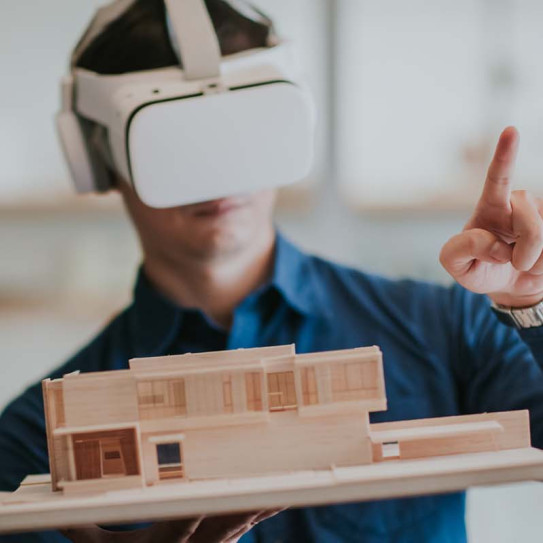
The Phygital Experience: merging digital and physical into one optimal experience
There are plenty of options for optimising the online shopping experience. However, the physical shopping experience lags behind for many retailers. The phygital trend combines online capabilities with physical presence in the form of interactive displays, personalised apps and augmented reality. In this blog, read about phygital's new possibilities and opportunities for retail.
The word phygital comes from merging "physical" with "digital". You pronounce it as "figital". As a trend, phygital started in 2013 and now phygital is seen as one of the emerging trends in retail in 2023.
What exactly is the phygital experience?
At first glance, phygital may seem like nothing new. Looking up product information and the availability in-store on your smartphone has long been possible, right? That falls under omnichannel. Here, as a brand, you provide a consistent experience across all offline and online channels. All channels have the same branding and information, but customer input, such as a question or order, remains a channel-specific interaction.
The next step is called unified experience where interactions on the different channels are seamless: ordering online and picking up in store, for example. Orders and stock information are synchronised across all channels.
Phygital is about combining physical and digital channels and creating relevant, consistent experiences. In a physical store, it makes it easier to meet customer demands, such as finding the right product in the store. For example, an app can help you show your DIY challenge to a hardware store employee or place a sofa in a digital version of your living room. Online, phygital is about digitizing the offline experience to enhance and make it more complete.
What can you do with phygital?
Phygital brings the optimised online shopping experience to the shop floor and vice versa. It combines the best of both worlds: the physical shopping experience and online shopping experience. Some practical examples and opportunities for inspiration:
- Will that chair fit in my room? The IKEA Place app lets you digitally place IKEA products in your living room and decide at home what will and won't fit. There is also the standard IKEA app that allows you to scan products in the store at IKEA Haarlem and Eindhoven in addition to online shopping and pay for them with a QR code.
- Online window displays. Zara.com's UX design uses photos and videos to display shop windows by target audience and category. This allows users to scroll easily until they see something suitable. Clicking takes them to the underlying product pages with ordering options and similar products.
- From mannequin to product. Nice shirt, but where can I find it? With Nike's retail app, you can scan a QR code at a mannequin in the shop to see all the products instantly and order them online.
- Interactive tour. Car brand Polestar offers an online showroom experience with scrollytelling: by scrolling, visitors get an interactive tour of a car with dynamic images and information.
- Ms Jansen enters. Being recognised on entry enriches the shopping experience, provided the customer appreciates it. As a brand, you can offer this option to your customers via an app setting. Employees can then be alerted to the entry of specific customers with specific wishes or needs, as in a pharmacy, for example.
- Adapt display and signing to visitors. Cameras allow you to scan your shoppers and analyse shopping behaviour. As soon as a camera sees two young men entering, for example, you can immediately display the latest men's summer collection and direct them to it via digital signing.
- Someone is standing by the men's trousers - size 32/34. Is someone standing by the trousers for some time? You can alert an employee to this for a proactive approach.
- Dynamic offerings. Besides identifying your shoppers, there are other factors you can respond to: crowds in the shop, a sports match that is playing now or the weather outside. Chance of rain: now 30% off rainwear.
- Cashless outlets. The cashier-less and unmanned AH to go as a supermarket remained a pilot in Zaandam. However, AH is putting the learnings gained to use in rolling out unmanned AH to go in office locations, educational institutions, hospitals and hotels.
The purpose of phygital is solving friction, whether it is experienced online or offline. By adding digital elements to the physical shopping experience, you can help visitors quicker and use employees more efficiently. Enriching the online experience with offline elements creates a better customer experience that converts faster.
Phygital assumes that customers do not want to do everything digitally, and in-store customers do not want to do everything physically. The extent to which the two can be combined depends entirely on the target audience and the market.
Phygital in practice
At its core, Phygital is about improving the user experience: by combining digital and physical, it becomes hybrid. Personalisation plays a leading role in this. For this, you need data, which can be collected in all kinds of ways. Privacy and clear communication must therefore be the starting point to steer the phygital experience in the right direction: not everyone wants to be recognised upon entry, for instance. You will also have to think carefully about digitally steering the shopping experience: pointing to the summer collection means not seeing the winter collection right away. Therefore, avoid putting blinders on your customers.
Want to get started with phygital? Then you will first have to understand your customer's problems and challenges. Take your time for a discovery journey so that you don't rush to a solution, because customers' perceptions are bigger than you think. First, make sure you really understand what is going on to keep the focus entirely on the user experience. Then get inspired online and offline on how to serve your customers better: that's phygital.
DID WE PIQUE YOUR INTEREST?
Get in touch to discover how we can drive your digital sucess.
Contact us

